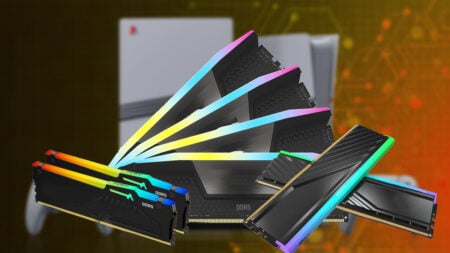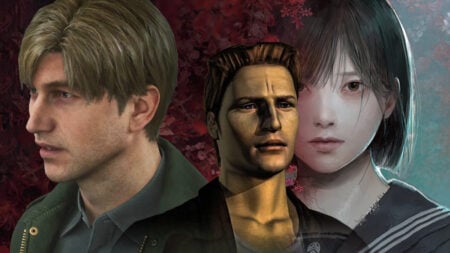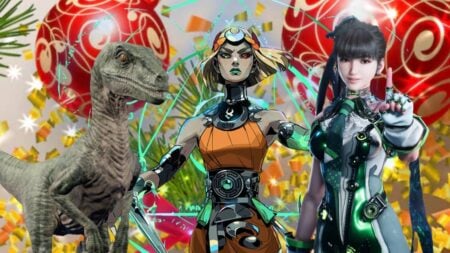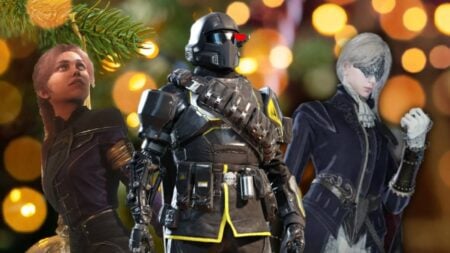Skip To...
One More Level is a great name for a developer that makes games as addictive as Ghostrunner 2. Half futuristic parkour sim, half ninja slash-em-up, it’s a fitting sequel to the 2020 original, cranking both the fun and punishment up several notches. It’s an overcaffeinated sci-fi setting that demands flawless gymnastics and relentless bloodshed. Though little here is original in terms of aesthetics and plot, it borrows from its inspirations incredibly well, creating a cohesive and satisfying package. It has significant faults, but there’s no denying the overall excellence of the game. If you long for the siren song of “just one more level” to lure you back to your keyboard or controller at 2 a.m., Ghostrunner 2 might be the game for you.
Ghostrunner 2 Review: Old Blade, New Edge

In Ghostrunner 2, you play as Jack, a cyborg ninja capable of dealing death to his enemies with various weapons and powers. Whether your enemies perish on the edge of your sword or the tip of your shuriken, they’re guaranteed to die in style. Levels switch from on-foot parkour and swordplay to motorcycle segments, platforming, and environmental puzzles, channeling the adrenaline rush of the best VR titles. Though the campaign is brief, challenges, a rogue-lite mode, and the hope of setting a new personal best time on each level will keep players returning. It’s a game that sticks to what it knows, offering little in the way of experimentation or innovation, but it executes the fundamentals well and will please returning fans.
Story: Ninjas of Tomorrow

Ghostrunner 2 picks up one year after the events of the original game. The Architect is gone, and Dharma Tower is free of the Keymaster’s influence. That’s good news for the remnants of humanity sheltering there, but the good news is short-lived. A dangerous AI cult is on the rise, threatening the tenuous peace that Jack fought so hard to achieve. Our hero has little choice but to pick his katana up once more and get back to work. Thankfully, he won’t have to go it alone.
Jack is aided by a ragtag assortment of allies, including some familiar faces. Without spoiling anything, they’re exactly the type of misfits you’d expect to see paling around with a futuristic ninja. They more or less fall into predictable tropes, from the smirking suit and steely veteran to the neurotic computer specialist. Unfortunately, there isn’t more depth on display here, but the game doesn’t necessarily need it. Games like this one live and die by the strength of their mechanics, and even if the game contained zero plot, it would probably be fine.

That said, One More Level does want to tell a story, and some significant twists along the way are better left unspoiled. Cutscenes are infrequent but well-executed, and the game’s hand-drawn opening is a gorgeous introduction to the world. Between missions, you return to your hub base for a chance to chat with your companions and level up. Conversations are relatively brief, but it’s nice to get a chance to familiarize yourself with your team. It’s a convenient way of expanding the story, although the exposition tends to tell rather than show.
Allies also get chatty with you mid-mission. Though you tackle almost every assignment alone, you often have a friend in your ear. Sometimes, they’re giving you useful mission advice, but often, they’re simply having small talk with Jack. The story is undoubtedly one of the game’s weakest areas, so this chance to flesh out the details is nice. When your setting is so over-the-top, you have to ground your characters or risk your players not caring about them. One More Level manages this balancing act, though the developer sometimes struggles to stick the landing.
Gameplay: Speed, Blood, and Chrome

Ghostrunner 2 is about movement above everything else. Dashing, dodging, wall-running, and flinging yourself around on a grappling hook are all key to progression and survival. The game does an excellent job of letting you learn one skill before introducing another. You must then string these abilities together to journey through increasingly complicated areas. Though occasionally frustrating, this learning process is also satisfying. If you’re looking for a first-person parkour sim or hectic ninja action, Ghostrunner 2 stomps most of the competition.
Dash to the edge of a catwalk and fling yourself into space. At the last second, fire your grappling hook to snag some dangling metal. Hurl yourself forward, wall-run across a flashing billboard, then land on a gigantic fan and catapult upward again. On the platform ahead of you, your enemies open fire, energy rifles sizzling with every shot. Slow time and adjust your position mid-air, letting their shots sail harmlessly, then land and slice them in two with a single stroke. It’s gorier than Super Mario, but the platforming is just as satisfying.
When you’re performing well, movement and combat have a flow that water only dreams of. Transitioning from one flip, dash, and jump to the next feels effortless, and there’s a surprising amount of skill expression possible, given the limited number of core actions. It’s like watching someone paint a beautiful mural using only two colors. You can’t help but admire the obvious talent it took to accomplish so much with so little. In the space of 10 seconds, you can go from Jet Set Radio rail grinding to uneven bar gymnastics to sword killings that would make Kurosawa proud. It’s occasionally overwhelming, but there’s no debate it feels good.

You and your enemies fall to a single hit, and the ability to one-shot or be one-shotted at any moment adds constant tension. One mistake, and you’re dead. In fact, dead is a thing you’re likely to be dozens of times before the end of certain levels. This isn’t Super Meat Boy with its demands of pixel-perfect movement, but it is a game that punishes tiny mistakes. The problem is that the mechanical precision of Ghostrunner 2 is just a hair duller than it needs to be. Movements feel just a fraction too floaty, and that fraction often makes the difference between a successful dodge and resetting at the last checkpoint.
As you advance, you’ll acquire new abilities, including the ability to throw shurikens, push people and objects with a Force-like ability, and leave a shadow clone of yourself behind. Ghostrunner 2 excels at integrating these abilities into its puzzles and combat. Some puzzles are obtuse, but for the most part, they’re well-explained and well-integrated in the environment. Puzzle segments never overwhelm the rest of the game. Ghostrunner 2 maintains its identity as an action game first and foremost.
In addition to the on-foot segments, you’ll jump on your motorcycle to tour the outside world. There are a couple of problems with the motorcycle. The first is that it’s too floaty, performing more like an F-Zero hovercraft than a bike. In a game that expects precise movements, that’s unacceptable. The motorcycle segments also suffer when they expand to a semi-open world. Other than the occasional collectible or enemy, these areas are devoid of life or interest. It makes traversing them feel like a pointless slog.
Graphics & Audio: Familiar Sights

Your grappling hook snaps out, its electric blue string snagging a piece of metal and launching you forward. Before you’ve closed half the distance, your enemy starts his swing. Two whips of crimson energy cut a wave through the air ahead of you. Touch a molecule of it and you die. You slow time and dash downward, boots connecting with the metal platform, katana already rising in your hands. Your foe doesn’t even have time to finish swinging before your sword connects. Its edge makes its sweet music as it separates your foe’s head from his trunk. Ghostrunner 2 nails the sights and sounds of the genre.
Dharma Tower and the surrounding areas would be right at home in Cyberpunk 2077. If you climbed high above street level in CDPR’s best game, leaving the pedestrians, cops, and gangsters behind in favor of neon advertisements and cold steel, you’d get the world of Ghostrunner 2. When you enter the digital world, everything shifts, and a different sci-fi juggernaut rears its head: Tron. If you’re a fan of the ’80s original or even Kosinski’s 2010 film, you’ll immediately recognize the circuit board geometry and laser lights.

Ghostrunner 2 might not have the most original aesthetics, but frankly, it doesn’t need them. The developers seem happy to work with sights and sounds already proven successful elsewhere. There’s nothing wrong with that. There are minor complaints, though, such as the motorcycle’s guns sounding a bit light and the dash feeling somewhat airy. Overall, the game’s visual and audio design is excellent. From skyscraper-sized bosses to normal baddies, every enemy looks good and is an absolute blast to tear apart.
Conclusion: A Worthy Successor

Ghostrunner 2 is an exceptional game, and its weaknesses shouldn’t stop fans of the genre from checking it out. I had few bugs and zero crashes during my time with it, and only once did I experience frame stuttering. Whether you’re here for the Mortal Kombat-worthy shinobi violence and severed heads, the death-defying motorcycle jumps, or the parkour platforming, you’ll enjoy almost everything the game offers. That said, Ghostrunner 2’s handful of problems do impact the enjoyment. The biggest culprit is the pacing. That wouldn’t be such a big deal in other genres, but it’s an issue in a game all about momentum. Still, if you enjoyed the original, sharpen your sword because the sequel is even better.
Ghostrunner 2 is available for PC, PlayStation 5, and Xbox Series X/S.
Ghostrunner 2 (PC Reviewed)
Ninja violence meets parkour and motorcycle-riding in this flawed but stylish action game.
Pros
- Stylish ultraviolence
- Great sci-fi aesthetic
- Addictive
Cons
- Poor pacing
- Somewhat imprecise movements
- Minor audio and visual issues







